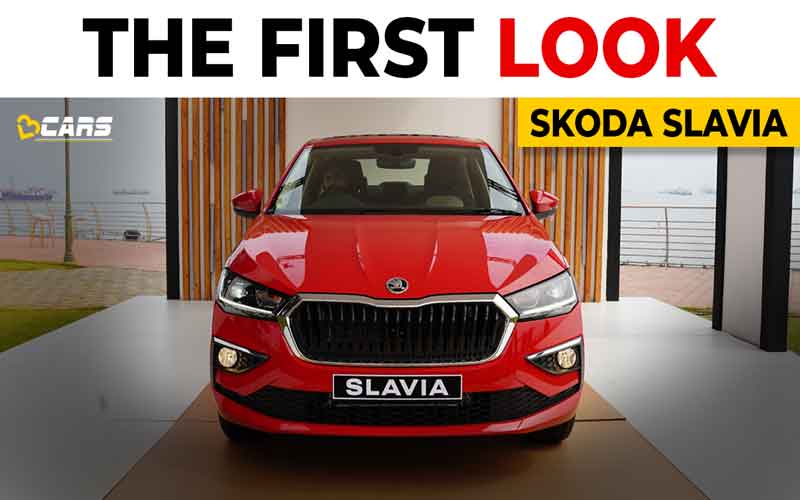Skoda Kushaq Crosses Rs. 20 Lakh Price Barrier; Is It Confidence Or Arrogance? — Opinion | V3Cars
After a recent price revision, the Skoda Kushaq became the first C-segment SUV to cross the critical psychological barrier of Rs. 20.0 lakh. The 2023 Kia Seltos facelift, which went on sale a few months ago, also got a price revision a few days ago. Soon after the Kushaq breached the barrier, the Seltos blew past it and now its top variant costs Rs. 20.30 lakh (ex-showroom). Earlier, they were keeping it capped at Rs. 19.99 lakh.

Also Read: Kia Seltos Increased Prices Inside | October 2023 Price List
Skoda Kushaq Base Model Now Rs. 70,000 Cheaper; Other Variants Get A Hike
If you follow our website, then you must have gone through my Kia Seltos price expectations article. If not, then you can read the article at the following link:
2023 Kia Seltos Facelift Expected Price — #WithLogic
You don’t need to read the entire article; just the part under the heading ‘Why Do You Think The Seltos 2023 Will Top Out At Rs. 20.0 Lakh And Not Cost More?’. Here, I justify why we weren’t expecting the Seltos facelift to cross Rs. 20.0 lakh. We had 3 main reasons:
- Features were mostly segment catch up
- The psychological barrier
- No need to be over-confident or arrogant with the Seltos facelift
At the time of estimating the prices of the Seltos, we weren’t sure which brand would be arrogant enough to breach it first. Well, now we know. While the Seltos more than deserved to cross the Rs. 20.0 lakh price limit, they kept it under that barrier. And as we expected, they waited for someone else to cross that limit. Soon after the Kushaq crossed this barrier, the Kia Seltos crossed it too and now the Seltos is the most expensive C-segment SUV. This is also something we expected back in July.
Skoda Kushaq Dimensions — Size Matters
First of all, it is much smaller. It’s so small that if Mahindra had made it, they’d have chopped it a bit more to make it a B2-segment SUV. And I’m not just imagining things. Mahindra managed to chop the Ssangyong Tivoli down from 4195mm to 3995mm and launched it as XUV300 in India. This move helped them enjoy lower taxes like a small car.
The Kushaq is only 3cm longer than the Tivoli. I’m sure it can fit within the 4m mark if the engineers decided to do so. But they chose to make it a 4m+ car and that too barely. So, buyers have to pay higher taxes and they don't even get the road presence we expect from a C-SUV.
The XUV300 is a car from a lower segment and costs significantly less than the Kushaq. Yet, the fact that it manages to offer a slightly taller and noticeably wider body should be alarming. Even in other areas, it’s not too far behind either. If you look at the width, the B2-segment SUVs - the Nexon, Sonet, Venue and Brezza - all are wider than the Kushaq, which is much more expensive and is supposed to represent cars from a higher segment.
|
|
|||
|
|
|
|
|
|
|
|
|
|
|
|
|
|
|
|
|
|
|
|
|
|
|
|
|
|
|
|
|
|
|
|
|
|
|
|
|
|
|
|
|
|
|
|
|
|
|
|
|
|
Engine Performance
The base engine of the Kushaq neither offers the psychological benefit of higher displacement nor the torque output to justify the significantly higher cost over B2 SUVs. If you compare it with the XUV300, you’ll notice that the smaller and more affordable XUV beats the Kushaq with a higher displacement and a better torque output. It even holds its own with a healthy power output. Considering that the XUV300 is based on a car that’s bigger than the Kushaq, the XUV300’s mileage figures are respectable too.
Even other B2 SUVs like the Nexon, Sonet and Venue manage to beat the Kushaq with higher power output and they offer comparable torque too.
|
|
|||
|
|
|
|
|
|
|
|
|
|
|
|
|
|
|
|
|
|
|
|
|
|
|
|
|
|
|
|
|
|
|
|
|
|
|
|
|
|
|
|
|
|
|
|
|
|
|
|
|
|
A B2 segment vehicle should not be able to beat a larger and more expensive C segment vehicle in any area except price and fuel efficiency. And yet, they not only manage to beat the Kushaq, they embarrass it.
Features — Good But Not Good Enough
Now, in terms of features, the Kushaq certainly beats the B2 SUVs. After the recent additions like power driver seat and power front passenger seat, the Kushaq has somewhat justified its place among the C-SUVs. However, it still doesn’t get a panoramic sunroof, ADAS features and a 360-degree camera. These features have become commonplace in the C SUV space. The Seltos, Astor and Elevate offer ADAS while the Creta will add it to its feature list with the next update. A panoramic sunroof is also pretty common in a C-segment SUV. And, when a B2-segment hatchback like Baleno can offer a 360-degree camera, then we ought to get it as a right in a car that’s barely larger than the Brezza or XUV300.
A car that emphasises so much on road safety also couldn’t afford to miss out on features like 360 degree camera and ADAS. After all, preventing an accident is a far better strategy than having to find out if the car can withstand a crash or not. We owe it to our fellow citizens and road users to invest in technologies that help us prevent the crash in the first place. Even when it comes to post crash safety, the lack of front thorax and curtain airbags in the lower variants makes their absence felt. Especially because Hyundai 6 airbags as standard in all of their cars — even in something as compact and affordable as the Grand i10 Nios.
Also Read: Skoda Slavia, Kushaq Get New Features Including Power Front Seats
Note: Instantly Sell Your Old Car With V3Cars Sell Used Car Platform
Then, there’s the quirk of choosing between a sunglass holder and a sunroof. How could VW Group engineers not figure out how to offer a sunroof and a sunglass holder in a car is beyond me. Hyundai and Kia both offer a sunglass holder along with a large sunroof and Skoda can’t figure out how to make room for a pair of sunglasses even with a small sunroof. This is appalling coming from a brand otherwise known for their 'Simply Clever' engineering prowess.
Is It Confidence Or Arrogance?
Let’s circle back to the question at hand. If Kia or Hyundai were the first to breach this barrier with their respective C-SUVs, then we would’ve said that they are pretty confident of their offering. But the fact that the Kushaq did it first gives me enough reasons to say that this is not sound judgment on their part.
Considering that they are significantly behind the segment benchmarks in terms of road presence and features, they should’ve stayed well within the Rs. 20.0 lakh mark. And when the Seltos facelift, which is deserving of breaching this barrier was respecting it, the Kushaq had absolutely no right to touch the Rs. 20.0 lakh price limit. I’m also pretty sure that this is not done with absolute confidence. If they had utmost confidence in their product, then they wouldn’t have dropped the prices of the base model.
All things considered, it’s pretty safe to say that the Kushaq’s breach of the critical Rs. 20.0 lakh psychological barrier is an arrogant move.
Also Read: Where Is Tata Altroz Racer? Did Tata Drop The Ball? — Opinion





















Considering the above factors does the Kushaq 1.0 Ambition automatic make sense in what is otherwise an overcrowded market? I am primarily looking for a car which is going to be driven by me only and looking for an automatic because I live in Mumbai and traffic is a nightmare. I am replacing my 2012 Maruti Swift Dzire, we are a family of 2 and I am a sedate driver. Other options I have considered are Hyundai Venue S(O) DCT, Kia Sonet HTX DCT and Honda Elevate VX CVT. Please help me choose.